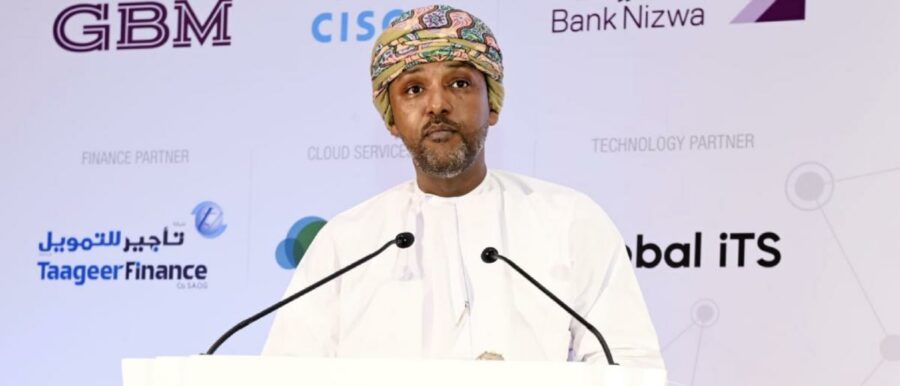Amid an upsurge in the cryptocurrency market, the Sultanate of Oman announced serious steps to issue its own digital currency.
The official Oman News Agency quoted the Governor of the Central Bank of Oman, Taher bin Salem Al-Omari, as saying: “The Central Bank is developing its own digital currency and open banking services.”
This came during his speech at the seventh edition of the New Age Banking Conference, which is being held in Muscat, which is an interactive platform for presenting new business models that make banks suitable for next-generation customers, and enable them to devise new growth paths and enhance the level of efficiency in operation and performance.
Al Omari added: “The Central Bank of Oman is committed to supporting innovation and modernizing the financial sector in line with ensuring financial stability.”
Across the world, central banks are looking at developing digital currencies amid the growing popularity of cryptocurrencies as an asset class among individual and institutional investors.
What is this digital currency?
The Union of Arab Banks said in a study in September of 2021, that this would be a Central Bank Digital Currency (CBDC). It is a new form of cash issued by the Central Bank. Central bank digital currencies are also known as core digital currencies.
“The central bank digital currency is inspired by bitcoin, but it differs from bitcoin in many ways. Bitcoin is not issued by a specific authority and lacks government legal regulations. Whereas a central bank digital currency is issued and backed by a central bank in a particular country.”
Today, we find that more than 80 percent of central banks around the world are looking to issue their own digital currency.
The main uses of digital currency
As for the most prominent features and main uses of the Central Bank’s digital currency, they are:
Digital banknotes: A CBDC is similar to digital banknotes. It can be used by individuals to pay business and shop fees.
It can also be used between financial institutions to settle transactions in the financial markets.
The third type is split into two: cash and reserves, which are held by qualified financial institutions in the central bank. Today, the central bank digital currency is the third type of money issued by the central bank, and is used as an electronic record or as the country’s digital currency.
Behind the scenes of the digital currency of central banks
Last February, the head of the International Monetary Fund, Kristalina Georgieva, said on the occasion of the fund’s launch of a research paper titled “Behind the scenes of the digital currency of central banks”, that central banks are rolling up their sleeves and getting to know more about the subtleties of digital money, and admitted that it is still too early to identify Central bank cryptocurrency saying, “We don’t quite know how far it will go and how fast it will go,” but what we do know is that central banks are building capabilities to harness new technologies, ready for what may lie ahead.”
For its part, the Arab Monetary Fund issued a practical guide for Arab central banks on the issuance of digital currencies based on the answers of 17 Arab central banks to a questionnaire prepared by the Fund.
The results showed a growing interest at the level of the Arab region in evaluating the process of issuing digital currencies by central banks, but the discussion is still in the stage of exploration and study. 11 Arab central banks, among the Arab central banks that responded to the questionnaire, have not yet decided the type of digital currency that the central bank aims to issue, while the other six central banks referred to digital currencies for wholesale payments and various types of digital currencies for retail payments, specifically mixed digital currencies for banks central Hybrid)), direct retail, and synthetic digital currencies).
The Federal Reserve is divided
The US Federal Reserve is discussing a potential new form of money to keep pace with private sector payment innovations, including stablecoins, a type of cryptocurrency intended to be pegged to the dollar or another national currency.
However, this idea divided Federal Reserve officials, making it unlikely that they would soon decide whether to create a digital dollar.
The stablecoins gained renewed interest from regulators after the TerraUSD coin, which at the time was one of the largest stablecoins, saw its value drop below the dollar. This prompts the development of a strong regulatory framework for the future of the financial system.
US Treasury Secretary Janet Yellen has asked the US Federal Reserve to consider issuing a digital dollar.
European Central Bank President Christine Lagarde hinted at having a digital euro by 2025.








